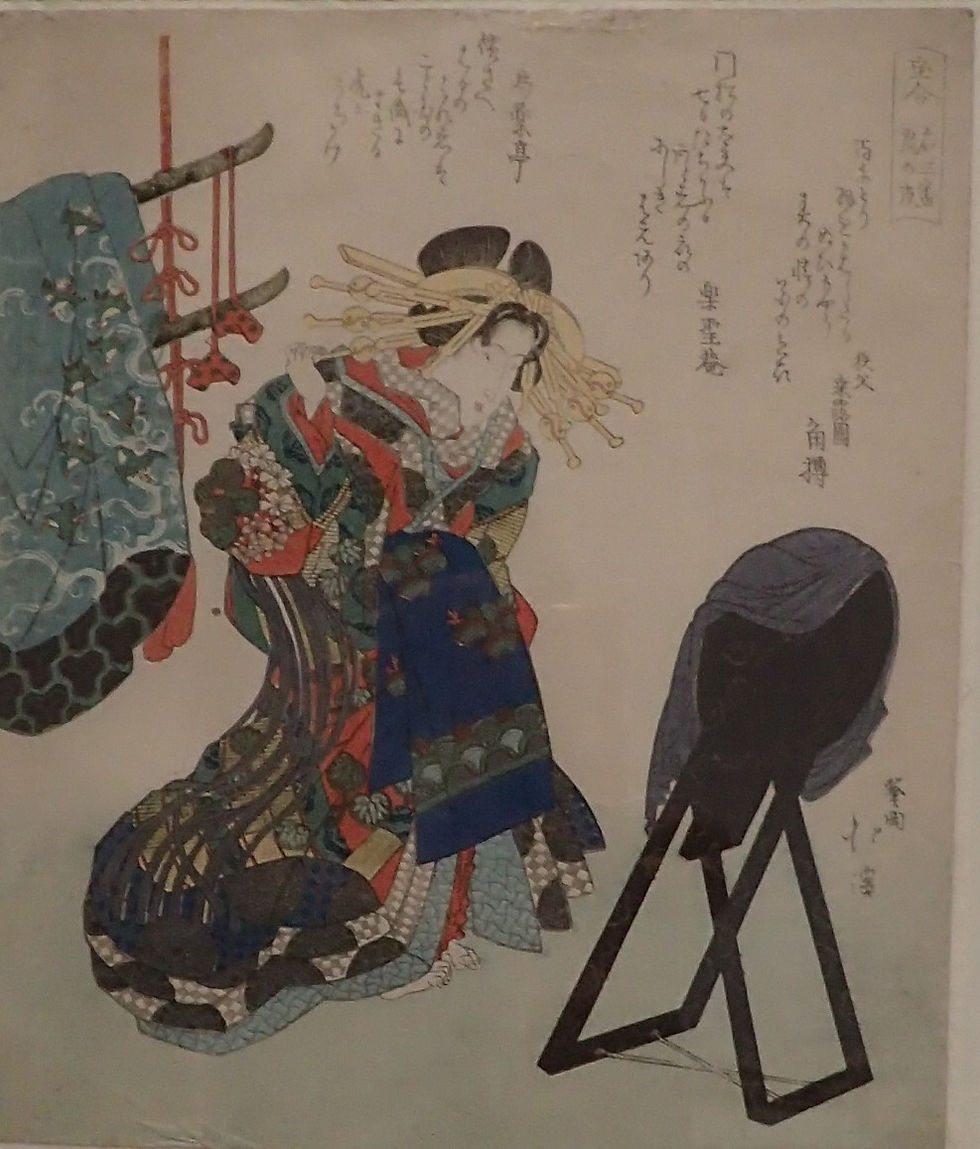Selection from the Permanent Collection of Chiba Museum of Art XI
- Michi

- 2022年1月9日
- 読了時間: 3分
更新日:2022年1月13日
The exhibition selected from the permanent collection is now on view from Jan. 4 to Feb. 6.
It includes Japanese paintings and woodblock prints from the 17th to the early 20th centuries by HISHIKAWA Moronobu, KATSUSHIKA Hokusai, KEISAI Eisen, ISHII Rinkyo, KAWASAKI Kyosen, and so on under the theme of "Celebrating the Year of the Tiger",
Here are some of them.

The woodblock print above is a part of "Omocha Junishi book" depicting folk toys of twelve zodiac animals by KAWASAKI Kyosen 川崎巨泉(1877~1942) who learned the ukiyoe of Kuniyoshi(国芳) style. Then Kyosen had devoted himself into the folk toys since the late Meiji era before he became noted as a toy picture book artist. The precious sketches of more than 5000 different toys are housed at Ningyodo Bunko Library in Osaka Nakanoshima Museum.

The picture on the silk scroll was titled "Tiger" by SHOKATSU Kan 諸葛監(1717~1781) who learned Shinnanbin school(沈南蘋流), by himself in Edo without going to Nagasaki. Kan drew a fierce and sacred tiger with its tail upward which often appeared in Korean folk pictures.

The title of the woodblock print above is "Bamboo, Tiger under the Moon" by KEISAI Eisen (1791~1848). Eisen depicted an exact moment that the fierce tiger that was about to drink water. You'll see how thirsty it was, rushing to the river at night.

The title of the woodblock print is "Right Team, Round Three: Tiger skin", from the series Contest of Treasures by TOTOYA Hokkei 魚屋北渓(1780~1850).
Hokkei depicted Toragozen, a courtesan at Yukaku, a leisure quarter, in Oiso,
who appeared in the kyogen of 'Soga brothers' revenge'.
Contest of treasures (宝合) was one of the pleasures among literary figures (文人). They brought their treasures, competed it as well as kyoka that they wrote after seeing the treasure.
Kyoka(狂歌) is a parody of tanka(Japanese poem) that contains social satire, irony, and humor in 31(5-7-5-7-7) syllables. Many kyoka poems were the parodies of masterpieces such as Kokin Wakashu (a collection of ancient and modern Japanese poetry) compiled in 900s(the Heian Era).
OTA Nanbo(大田南畝) or SHOKUSANJIN(蜀山人) first read kyoka in 1780s and since then many poets were attracted by kyoka. We are interested in reading kyoka in the late Edo Era.
.

The title of the woodblock print above is "Potted Plum and Sake Cup" by KATSUSHIKA Hokusai(1760~1849). Hokusai depicted it for Joryu(如柳), a poet at Okabe, to celebrate that he became 59 years old by the traditional Japanese system in the new year.
Special Edition: Prints from Fuse Collection
FUSE Toshio(布施俊夫) was born in Chiba City in 1920 (大正9年). Besides his work in a pharmaceutical company, he was enthusiastic about collecting works of art. Seventy-five works, mostly prints by European and Japanese artists from the 16th century to recent times, were donated to Chiba City by FUSE Toshiko in 1995 (平成7年).
Here are some.

The Lithograph above is from "the series of ten dancers" by Henri Matisse (1869~1954). Matisse depicted a dancer taking a break. He was a leader of Fauvism, the style of 'the wild beasts' and was called 'A Color Magician'.

The title of the Lithograph above is Clairvoyant (透視力) by Paul Delvaux デルーヴォー(1897~1994) who was a Belgian painter of Surrealism. In his dream-like works you'll see nude women through classical buildings or train stations, combined with motifs such as skeletons and other unexpected objects.

The title of the Lithograph above is "The Trampled Flowers,(荒らされた花々) from Daphnis and Chloe" by Marc Chagall (1887~1985) who was a Russian-French artist. He created a broad range of artistic formats, including painting, drawings, stained glass, stage sets, ceramics, tapestries and fine art prints.
And etching, drypoint by Albrecht Durer (1471~1528),
etching, engraving by William Hogarth (1697~1764),
etching, aquatint by Francis de Goya y Lucientes (1746~1828),
and by HAMADA Chimei (1917~2018) are on view.
Special Collection: Calligraphy-the Second Japonism
TESHIGAWARA Sofu's Calligraphy and painting on the six-panel folding screens respectively.
Oil painting by OKADA Kenzo, and so on.
More about Chiba City Museum of Art: please access https://www.tokyo2020chiba.com/post/shall-we-see-the-museums







コメント